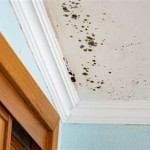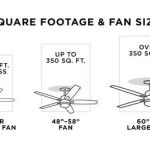Basement Bedrooms Without Egress Windows: Legality, Safety, and Alternatives
The creation of a bedroom in a basement space often presents unique challenges, particularly concerning egress windows. The term "egress" refers to a safe and reliable means of exiting a building, especially important in emergency situations like fires. Building codes frequently mandate egress windows in bedrooms to ensure occupant safety; therefore, a basement bedroom without one raises significant questions about legality, safety, and potential solutions.
Understanding the intricacies of egress requirements is crucial before designating a basement space as a bedroom. Code requirements vary based on location, and failing to adhere to these regulations can lead to legal issues, safety hazards, and difficulties when selling the property. This article will explore the legal implications, safety concerns, and alternative solutions for basement bedrooms lacking egress windows.
Legal Implications of Basement Bedrooms Without Egress
Building codes are designed to protect the health and safety of building occupants. They are typically enforced at the local or state level, and specific requirements can vary considerably. Generally, a room intended for sleeping, including a basement bedroom, must have at least two independent means of escape. One of these is usually a door leading to a common area like a hallway or living room. The second means of escape is typically either a window or a door that opens directly to the exterior.
The rationale behind this requirement is straightforward: in the event of a fire or other emergency, one escape route may be blocked. A second, independent escape route provides occupants with an alternative means of exiting the building safely. This is particularly critical in basements, which can be prone to flooding and where smoke and heat can accumulate rapidly during a fire. Without an egress window, occupants may be trapped in the basement with limited or no means of escape.
If a basement bedroom lacks a compliant egress window, it may be considered an illegal living space. This can have several consequences. First, the homeowner may be subject to fines or penalties from the local building department. Second, the homeowner may be required to bring the space into compliance with building codes, potentially requiring the installation of an egress window or the removal of bedroom designation. Third, the lack of a legal bedroom can affect the property's value and marketability. Disclosing the non-compliant bedroom during a sale is legally necessary in most jurisdictions, potentially deterring buyers or necessitating a price reduction to compensate for the cost of remediation. Lastly, insurance coverage could be affected. If a fire or other incident occurs in an illegal basement bedroom, the insurance company may deny coverage, leaving the homeowner responsible for all costs.
It is imperative to consult with the local building department or a qualified building inspector to determine the specific egress requirements for basement bedrooms in a given jurisdiction. Understanding these requirements is the first step in ensuring that the basement space is safe and legally compliant.
Safety Concerns Associated with Basement Bedrooms Lacking Egress
The absence of an egress window in a basement bedroom significantly elevates safety risks. Fire is the most prominent concern. Basements often contain furnaces, water heaters, and electrical panels, all of which can be potential sources of ignition. Furthermore, basements tend to accumulate smoke and heat more quickly than above-ground spaces, making escape more difficult. Without an egress window, occupants may be unable to escape the basement in the event of a fire, leading to severe injury or death.
An egress window provides ventilation in addition to an escape route. Proper ventilation is essential for maintaining air quality and preventing the buildup of harmful gases like carbon monoxide. Carbon monoxide is a colorless, odorless gas produced by the incomplete combustion of fuels. It can be deadly even in small concentrations. Without adequate ventilation, carbon monoxide can accumulate in the basement, posing a serious health risk to occupants.
Beyond fire and carbon monoxide, the lack of an egress window can also hinder rescue efforts. In an emergency, firefighters or other first responders may need to enter the basement to rescue occupants. An egress window provides a readily accessible point of entry for rescue personnel, allowing them to quickly reach trapped individuals. Without an egress window, rescue efforts may be delayed or hampered, increasing the risk of serious injury or death.
Moreover, consider the psychological impact. Being trapped in a basement during an emergency can be terrifying. An egress window provides a sense of security and allows occupants to see and communicate with the outside world, which can be especially important during a crisis. The lack of an egress window can create a feeling of confinement and helplessness, exacerbating the stress and anxiety associated with an emergency situation.
Regularly testing smoke detectors and carbon monoxide detectors is vital, regardless of whether an egress window is present. However, these devices should not be considered a substitute for a proper egress window. They are intended to provide early warning of a problem, allowing occupants time to escape. However, if there is no safe and reliable means of escape, the warning may be of little value.
Alternatives and Solutions for Basement Bedrooms Without Egress Windows
If a basement bedroom lacks a compliant egress window, several alternatives and solutions may be considered. The most direct solution is to install an egress window that meets all applicable building code requirements. This typically involves cutting an opening in the foundation wall and installing a window well to ensure sufficient light and ventilation. The window itself must meet specific size requirements, including a minimum net clear opening area, a minimum opening height, and a minimum opening width. The sill height (the distance from the floor to the bottom of the window opening) must also be within specified limits.
The installation of an egress window can be a significant undertaking, requiring specialized equipment and expertise. It is often necessary to obtain a building permit before commencing work, and the installation must be inspected by the local building department to ensure compliance with all applicable codes. The cost of installing an egress window can vary depending on several factors, including the size and type of window, the depth of the window well, and the complexity of the excavation work. However, the cost is often justified by the increased safety and value of the property.
Another potential solution is to install an egress door. An egress door is a door that opens directly to the exterior of the building. It must meet specific size and construction requirements to be considered a compliant egress. This option may be feasible if the basement has a walkout entrance or if it is possible to create a new exterior door opening. Similar to egress windows, installing an egress door may require a building permit and inspection.
If installing an egress window or door is not feasible, an alternative approach is to reconfigure the basement space to eliminate the bedroom designation. This may involve removing the bed and other bedroom furniture and using the space for a different purpose, such as a home office, recreation room, or storage area. If the space is no longer used as a bedroom, the egress requirements may not apply. However, it is essential to consult with the local building department to confirm that the proposed use is permitted and that no other code requirements apply.
In some cases, it may be possible to install a sprinkler system in the basement. A sprinkler system can help to suppress a fire and provide occupants with additional time to escape. While a sprinkler system may not eliminate the need for an egress window entirely, it may be accepted as a mitigation measure in certain circumstances. The local building department should be consulted to determine if a sprinkler system is an acceptable alternative to an egress window in a specific situation.
Ultimately, the best solution for a basement bedroom without an egress window will depend on the specific circumstances, including the layout of the basement, the applicable building codes, and the homeowner's budget. It is crucial to seek professional advice from a qualified building inspector, contractor, or architect to determine the most appropriate and cost-effective solution. Addressing the egress issue is paramount to ensuring the safety and legality of the basement space.
Before undertaking any renovation or modification to a basement space, it is imperative to contact the local building department and obtain the necessary permits. This will ensure that the work is performed in compliance with all applicable codes and regulations and will avoid potential legal problems down the road. Ignoring code requirements can lead to significant fines, penalties, and even legal action.

Basement Bedroom Pros

Bedrooms Without Windows Greenbuildingadvisor

Basement Apartment Nyc What Is A Legal Bedroom

How To Make A Basement Bedroom Legal And Code Building Bluebird

9 Easy Bedroom Basement Ideas Design Tips

Egress Window Requirements For Bedroom In Toronto Ontario

How Many Egress Windows Are Required In A Basement Burano Doors

Non Conforming Basement Bedroom We Can Help 509 Concrete Cutting And Egress Windows

9 Easy Bedroom Basement Ideas Design Tips

Learn The Ins And Outs Of Basement Egress Windows Window Wells News Events For Total Finishing
See Also








